The Beginners Guide to Baby Carrying (PDF)
File information
Author: The beginners guide to baby carrying
This PDF 1.5 document has been generated by Microsoft® Word 2013, and has been sent on pdf-archive.com on 15/03/2015 at 18:52, from IP address 92.4.x.x.
The current document download page has been viewed 560 times.
File size: 1.43 MB (10 pages).
Privacy: public file
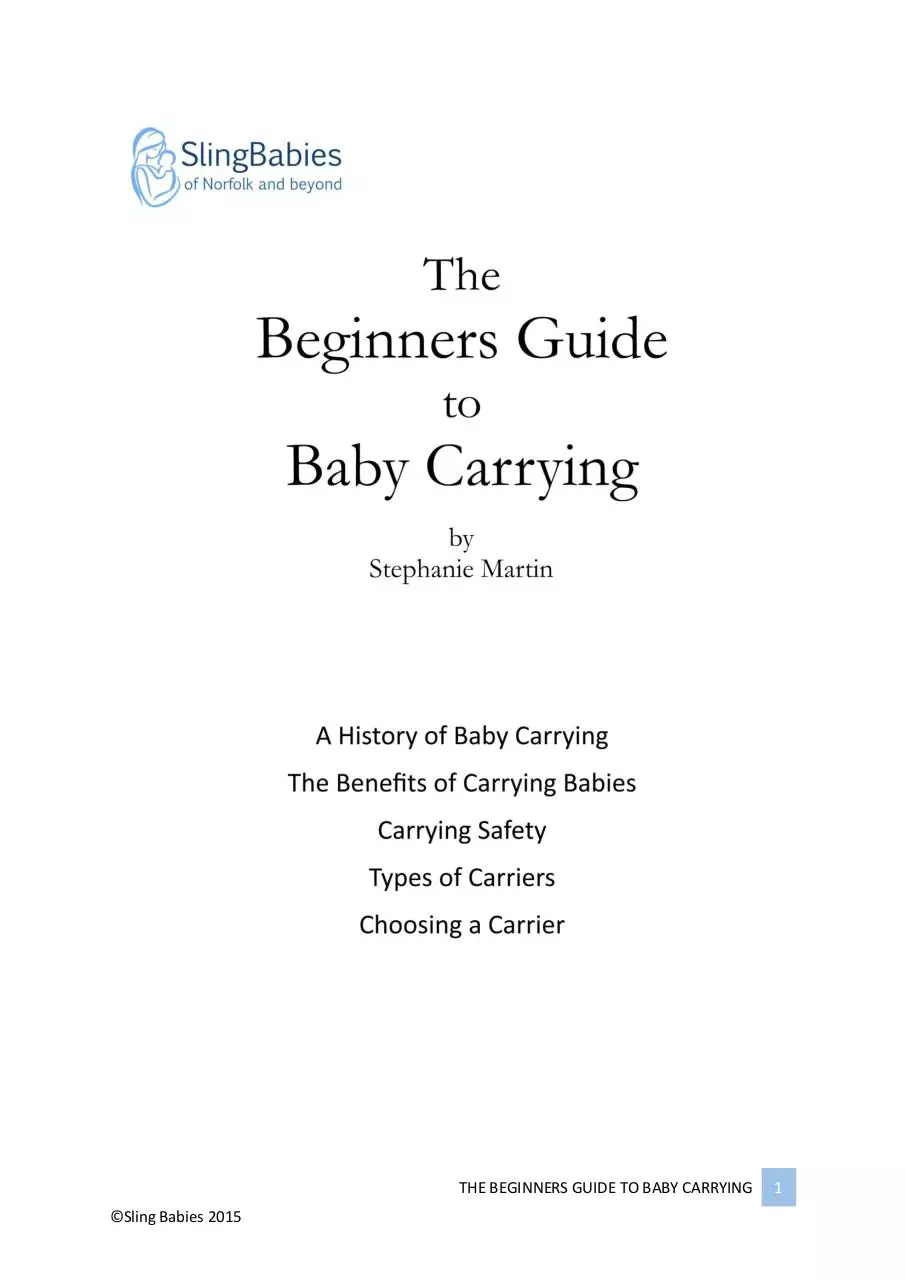
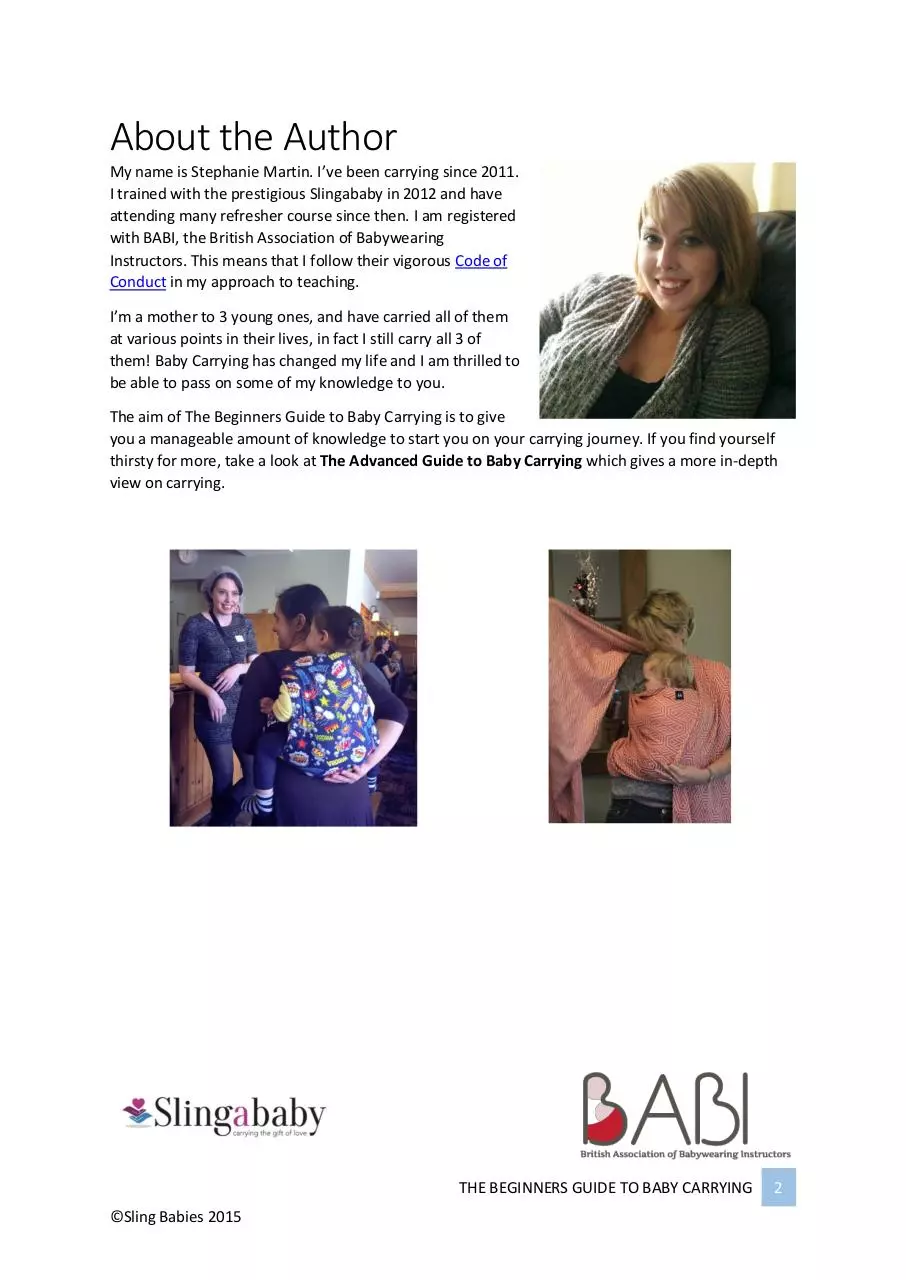
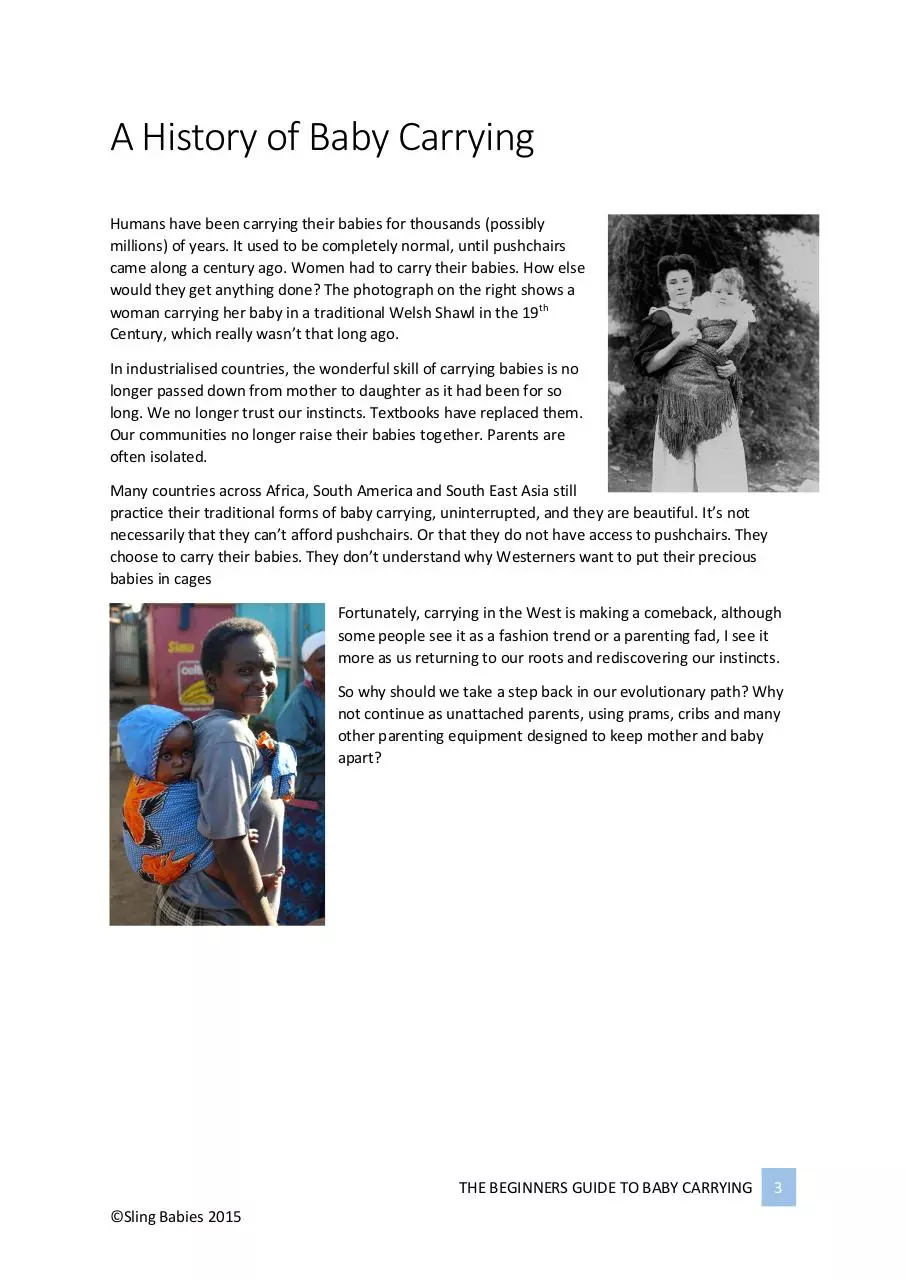

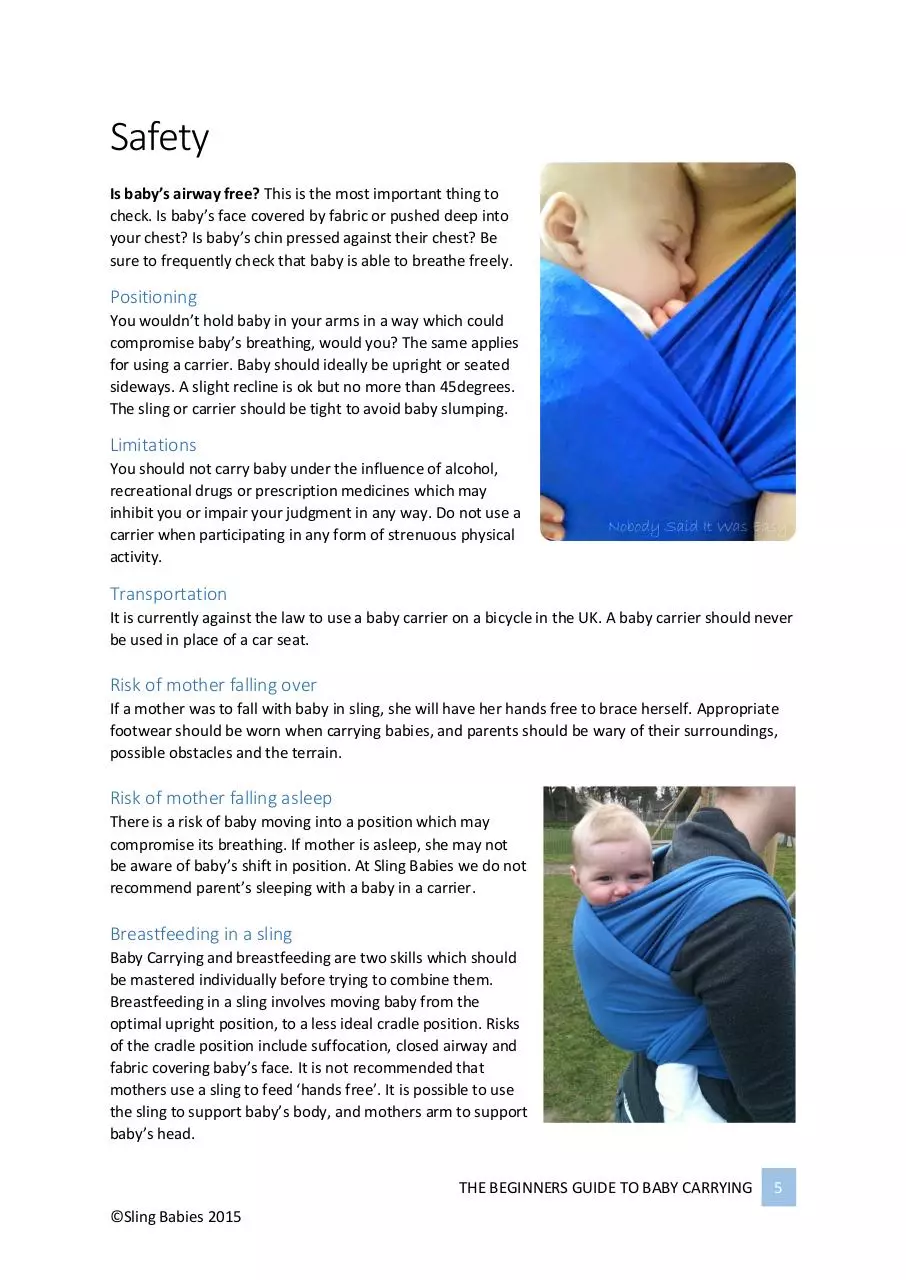
File preview
THE BEGINNERS GUIDE TO BABY CARRYING
©Sling Babies 2015
1
About the Author
My name is Stephanie Martin. I’ve been carrying since 2011.
I trained with the prestigious Slingababy in 2012 and have
attending many refresher course since then. I am registered
with BABI, the British Association of Babywearing
Instructors. This means that I follow their vigorous Code of
Conduct in my approach to teaching.
I’m a mother to 3 young ones, and have carried all of them
at various points in their lives, in fact I still carry all 3 of
them! Baby Carrying has changed my life and I am thrilled to
be able to pass on some of my knowledge to you.
The aim of The Beginners Guide to Baby Carrying is to give
you a manageable amount of knowledge to start you on your carrying journey. If you find yourself
thirsty for more, take a look at The Advanced Guide to Baby Carrying which gives a more in-depth
view on carrying.
THE BEGINNERS GUIDE TO BABY CARRYING
©Sling Babies 2015
2
A History of Baby Carrying
Humans have been carrying their babies for thousands (possibly
millions) of years. It used to be completely normal, until pushchairs
came along a century ago. Women had to carry their babies. How else
would they get anything done? The photograph on the right shows a
woman carrying her baby in a traditional Welsh Shawl in the 19 th
Century, which really wasn’t that long ago.
In industrialised countries, the wonderful skill of carrying babies is no
longer passed down from mother to daughter as it had been for so
long. We no longer trust our instincts. Textbooks have replaced them.
Our communities no longer raise their babies together. Parents are
often isolated.
Many countries across Africa, South America and South East Asia still
practice their traditional forms of baby carrying, uninterrupted, and they are beautiful. It’s not
necessarily that they can’t afford pushchairs. Or that they do not have access to pushchairs. They
choose to carry their babies. They don’t understand why Westerners want to put their precious
babies in cages
Fortunately, carrying in the West is making a comeback, although
some people see it as a fashion trend or a parenting fad, I see it
more as us returning to our roots and rediscovering our instincts.
So why should we take a step back in our evolutionary path? Why
not continue as unattached parents, using prams, cribs and many
other parenting equipment designed to keep mother and baby
apart?
THE BEGINNERS GUIDE TO BABY CARRYING
©Sling Babies 2015
3
The Benefits of Carrying Babies
First and foremost, babies who are carried cry less. In the parts of the world where baby carrying is
still practiced, babies do not cry unless something is seriously wrong. Why? Because baby is carried
by their carer. Baby is kept safe and warm in the comfort of a wrap or carrier. Baby has 24/7 access
to the breast.
Let’s think about the transition from womb to
world. Inside the womb, it’s cramped, warm and
quiet. In a pushchair/bouncy chair/cot, it’s open,
cool and sometimes noisy. In a carrier, it’s
cramped, warm and possibly quiet (or at least with
the familiar sound of mum’s breathing and
heartbeat). Transitioning from womb to carrier
must be easier for baby surely.
Baby carrying has physical benefits for baby too,
from birth in fact. Being held upright and supported
by a wrap or carrier means there's minimal
pressure on baby's spine. Baby can sit in the optimum position with his hips open. As you move,
baby makes tiny movements too, working out his little muscles and strengthening his core. It's also a
very gentle exercise for post-partum mothers.
Babies don't just benefit from feeling emotionally attached. Baby
carrying offers babies the chance to see the world from your point
of view, which is a lot more interesting than seeing it from a
pushchair or bouncy chair. They get to explore our amazing world
with us. They get to be in on the action. When babies are carried,
they enter the "quiet, alert state" in which they are taking in every
detail and processing it. This is the ideal state for them to be in to
maximise their learning and cognitive development.
Babies who are carried are by no means spoiled. Some may
suggest that by carrying a baby all the time, baby will become too
attached and never want to leave your side. In fact, the opposite is
more accurate. Babies who are carried are very much attached to
their parents, yes. They know that their parent will always be
there for them. They know they are loved. They are happy to go off and play with others, be left with
a sitter or at nursery, because they know their parent will return.
What are the other benefits for parents? Apart from having a baby who hardly ever cries? You may
just have a confidence boost. Being able to carry on with your daily life safe in the knowledge that
baby is completely safe against your body, that's a pretty great feeling. You may also find it easier to
know what your baby wants before he even starts crying. Parents learn to read subtle changes in
facial expressions and other cues. Many parents can determine their baby's needs well before baby
begins verbal communication.
The benefits of carrying your baby/toddler/pre-schooler are pretty much limitless.
THE BEGINNERS GUIDE TO BABY CARRYING
©Sling Babies 2015
4
Safety
Is baby’s airway free? This is the most important thing to
check. Is baby’s face covered by fabric or pushed deep into
your chest? Is baby’s chin pressed against their chest? Be
sure to frequently check that baby is able to breathe freely.
Positioning
You wouldn’t hold baby in your arms in a way which could
compromise baby’s breathing, would you? The same applies
for using a carrier. Baby should ideally be upright or seated
sideways. A slight recline is ok but no more than 45degrees.
The sling or carrier should be tight to avoid baby slumping.
Limitations
You should not carry baby under the influence of alcohol,
recreational drugs or prescription medicines which may
inhibit you or impair your judgment in any way. Do not use a
carrier when participating in any form of strenuous physical
activity.
Transportation
It is currently against the law to use a baby carrier on a bicycle in the UK. A baby carrier should never
be used in place of a car seat.
Risk of mother falling over
If a mother was to fall with baby in sling, she will have her hands free to brace herself. Appropriate
footwear should be worn when carrying babies, and parents should be wary of their surroundings,
possible obstacles and the terrain.
Risk of mother falling asleep
There is a risk of baby moving into a position which may
compromise its breathing. If mother is asleep, she may not
be aware of baby’s shift in position. At Sling Babies we do not
recommend parent’s sleeping with a baby in a carrier.
Breastfeeding in a sling
Baby Carrying and breastfeeding are two skills which should
be mastered individually before trying to combine them.
Breastfeeding in a sling involves moving baby from the
optimal upright position, to a less ideal cradle position. Risks
of the cradle position include suffocation, closed airway and
fabric covering baby’s face. It is not recommended that
mothers use a sling to feed ‘hands free’. It is possible to use
the sling to support baby’s body, and mothers arm to support
baby’s head.
THE BEGINNERS GUIDE TO BABY CARRYING
©Sling Babies 2015
5
Dressing Baby
Unless you live in an extremely cold part of the world,
there is no need to layer baby up with things like
snowsuits. Your body with help to regulate baby’s
temperature but to do that, you need to be in close
contact, not separated by several layers of clothing.
During the summer months, a simple vest will suffice for
baby, with the added protection of suncream and a sun
hat. In the winter months, normal indoor clothes plus
extra protection on hands and feet, along with a warm
hat. Big winter coats are not ideal for carrying babies.
You can buy a variety of coats and fleece jackets
designed for baby carrying which go over you and baby.
Babies with Additional Needs
Extra care should be taken with babies who were born
prematurely, with a low birth weight or with any other
medical conditions. Your health care professional will be
able to advise you about carrying a baby with additional
needs.
We believe in educating parents about the risks involved with carrying their babies and
allowing them to make their own decisions.
THE BEGINNERS GUIDE TO BABY CARRYING
©Sling Babies 2015
6
Types of Carrier
Stretchy Wraps
Stretchy Wraps are favourable for newborn babies. The main benefit of these types of wrap is that
you can pre-tie that wrap and then pop baby in and out as necessary.
Woven Wraps
Woven Wraps do not stretch. They are suitable from birth to toddler and beyond. Woven Wraps
come in various lengths. Shorter wraps are used for simple hip carries, where the longer wraps are
great for multi-layered front and back carries.
THE BEGINNERS GUIDE TO BABY CARRYING
©Sling Babies 2015
7
Mei Tai
A Mei Tai (pronounced may-tie) is a traditional Chinese carriers consisting of a rectangular body
panel, two waist straps and two shoulder straps. Modern variations include carriers with hoods,
buckle waists and other fancy extras.
Buckles
Buckled carriers have much shorter straps than a Mei Tai and are designed to be easier to use. Some
brands of buckle carriers have many, many buckles with a very utilitarian look, other brands are
much simpler with just the waist buckle and side buckles.
THE BEGINNERS GUIDE TO BABY CARRYING
©Sling Babies 2015
8
Ring Slings
A ring sling is a length of non-stretchy fabric which has 2 rings attached to one end. The sling is worn
on one shoulder and is reasonably simple to use. Suitable from birth to toddler and beyond, and
available in a variety of fabrics including the same fabrics used for Woven Wraps.
Other Types of Carrier
Other types of carrier include Onbu, Pods, Pouches and more. For more information on these type of
carriers, and for more in-depth knowledge of the above carries, see The Advanced Guide to Baby
Carrying.
Choosing a Carrier
Be sure to read the description clearly so you can check if the carrier matches your needs (e.g.
buckle waist or tie waist, age suitability).
If possible, read the instructions before making your purchase. Product videos are even better as
you’ll really be able to see how the carrier works.
A great way to try before you buy, is by visiting your local Sling Library or Sling Consultant. They’ll be
able to help you try a variety of carriers and you can even hire a carriers. Some services are free,
others are charged for.
THE BEGINNERS GUIDE TO BABY CARRYING
©Sling Babies 2015
9
Download The Beginners Guide to Baby Carrying
The Beginners Guide to Baby Carrying.pdf (PDF, 1.43 MB)
Download PDF
Share this file on social networks
Link to this page
Permanent link
Use the permanent link to the download page to share your document on Facebook, Twitter, LinkedIn, or directly with a contact by e-Mail, Messenger, Whatsapp, Line..
Short link
Use the short link to share your document on Twitter or by text message (SMS)
HTML Code
Copy the following HTML code to share your document on a Website or Blog
QR Code to this page
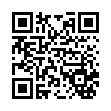
This file has been shared publicly by a user of PDF Archive.
Document ID: 0000215333.